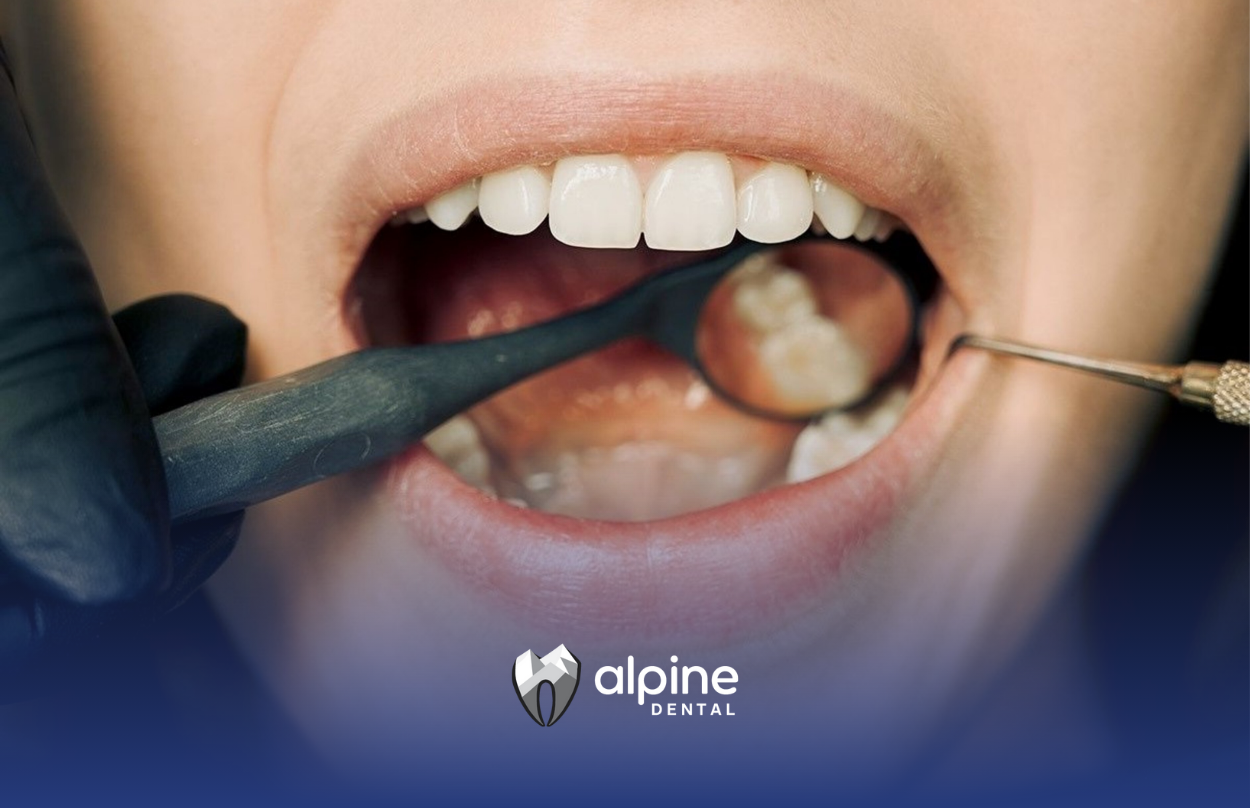How Does Dental Insurance Work? A Complete Guide
Maintaining good oral health is a critical part of your overall well-being, but the cost of care can be a significant hurdle. This is where dental insurance comes in, making essential treatments more affordable and accessible. Whether you need routine checkups or more complex procedures, having a dental plan can help protect your smile and your finances. Understanding how dental insurance works is the first step toward selecting a policy that meets your unique needs and helps you prioritize your oral health without breaking the bank.
What Is Dental Insurance?
Dental insurance is a contractual agreement you make with an insurance company to help manage the expenses associated with your dental care. In exchange for a regular payment, known as a premium, the dental insurer agrees to pay a portion of your dental bills. Instead of bearing 100% of the cost yourself, your dental coverage helps pay for treatments ranging from routine cleanings to major surgeries, making care much more manageable financially.
Unlike health insurance, which may only cover dental procedures related to a medical condition, dental insurance is specifically designed for oral health needs. You can obtain a policy through your employer or purchase one directly from an insurance company. The goal is to reduce your out-of-pocket expenses and encourage regular preventive care to catch potential issues early. We will explore the key features and terms you need to know.
Key Features of Dental Insurance Plans
When you start comparing dental insurance plans, you will notice they share several common features that define your coverage and costs. Understanding these components is essential for choosing a plan that provides the right dental benefits for you and your family. These features determine how much you pay and what services are covered.
The most important features to look for in a plan include:
- Monthly Premium: The fixed amount you pay regularly to keep your insurance active.
- Deductible: The amount you must pay out-of-pocket for certain services before your insurance begins to pay.
- Annual Maximum: The highest amount your plan will pay for your dental care within a plan year.
- Provider Network: The group of dentists who have agreed to provide care at pre-negotiated rates.
Each of these elements affects your total costs and access to care, so it's vital to review them carefully in any plan you consider.
Common Terminology Explained (Premiums, Deductibles, Copays)
To fully grasp how your dental plan works, you need to be familiar with its terminology. These terms are listed in your plan details and directly impact your financial responsibility for dental services.
Here are the definitions of the most common terms:
- Premium: This is the consistent fee, often paid monthly, that you pay to the insurance company to maintain your coverage.
- Deductible: This is the initial amount you must pay for covered dental services before your insurance plan starts to share the costs.
- Copay: A copay, or copayment, is a fixed amount you pay for a specific service at the time you receive it, such as for a dental visit.
- Coinsurance: After you meet your deductible, you and your insurer share the cost of care. Your portion is called coinsurance and is typically a percentage.
Always check your plan documents to see the specific figures for your premium, deductible, and copay to avoid unexpected expenses.
How Does Dental Insurance Work in the United States?
So, how does dental insurance work on a practical level? You select a plan and pay a recurring premium to an insurance company. In return, the insurer helps cover the costs of your dental treatments based on the specific plan details you've chosen. This cost-sharing model makes dental care more predictable and affordable.
Most plans operate with a network of dentists who have contracted with the insurance company to provide services at discounted rates. Visiting an in-network dentist almost always results in lower out-of-pocket costs for you. Next, we’ll look at how you can enroll in a plan and what the claims process involves.
Enrollment and Eligibility Requirements
Getting dental insurance typically happens in one of two ways: through group plans or by purchasing individual coverage. Group plans are offered by employers, and enrollment usually occurs during a specific "open enrollment" period each year. This is often the most straightforward way to get coverage.
Individual coverage, on the other hand, is a policy you buy directly from an insurance provider. A key benefit is that you can often purchase these plans at any time of the year, and they are not tied to your employment. The eligibility requirements for enrollment are generally simple.
You will typically need to:
- Choose the type of plan you want (e.g., PPO or HMO).
- Provide basic personal information for yourself and any family members you wish to cover.
- Meet any state-specific residency rules.
Once you complete these steps and make your first premium payment, your coverage will begin.
The Claims Process: Step-by-Step
After you receive dental care, the claims process begins. In most cases, you don't have to handle the paperwork yourself. Your dentist's office will submit a claim directly to your dental insurer, detailing the dental procedures you received.
The insurer then reviews the claim against your benefits for the current plan year. They calculate how much of the bill they will pay based on your coverage levels, deductible, and annual maximum. You will then receive a bill from your dentist for the remaining amount of money you owe.
Here is a simplified look at the process:
| Step | Action |
|---|---|
| 1 | You receive a dental service from your dentist. |
| 2 | The dentist's office submits a claim to your insurance company. |
| 3 | The insurer processes the claim based on your plan's coverage. |
| 4 | The insurer pays its portion, and you are billed for the remainder. |
Types of Dental Insurance Plans
There are several types of plans available, each with its own structure for costs and provider access. The most common options you will encounter are Dental Preferred Provider Organization (PPO) plans and Dental Health Maintenance Organization (HMO) plans. You might also find indemnity plans, which offer a different kind of flexibility.
Understanding the differences between these plans is key to finding the right fit. Your choice will determine which dentists you can see and how much you will pay out-of-pocket for services. Let's compare these types of plans and also examine the distinction between group plans and individual coverage.
PPO vs. HMO vs. Indemnity Plans
The main differences between the most common dental plans relate to your choice of dentist and overall costs. A Preferred Provider Organization (PPO) plan gives you the flexibility to visit any dentist, but you will achieve lower costs by staying within the plan network.
A Health Maintenance Organization (HMO) plan requires you to use dentists within its network, often in exchange for lower premiums and out-of-pocket expenses. An indemnity plan offers the most freedom, allowing you to see any dentist without network restrictions, but your insurer simply pays a set percentage of the cost.
Here’s a quick comparison:
| Plan Type | Network Flexibility | Cost | Key Feature |
|---|---|---|---|
| PPO | High (in/out-of-network) | Higher Premiums | Flexibility to choose dentists, saves with network |
| HMO | High (in/out-of-network) | Lower Premiums | Must use network dentists, may require referrals |
| Indemnity | Highest (any dentist) | Higher Out-of-Pocket | Insurance pays a percentage of costs, you pay rest |
Group Plans vs. Individual Coverage
Beyond the plan type, dental insurance can also be categorized by how you obtain it. Group plans are purchased by an organization, most commonly as an employer-sponsored plan for its employees. A major advantage here is that the employer often pays a portion of the premium, making it a very cost-effective option.
On the other hand, individual coverage is a policy you purchase directly from an insurance company. These plans are portable, meaning you can keep your coverage even if you change jobs. You may also find more plan options available to suit your specific needs.
Here’s a breakdown of the key differences:
- Group Plans: Typically have lower premiums and are obtained through an employer.
- Individual Coverage: Purchased directly, portable, and offers a wider selection of plans.
- Some individuals also purchase supplemental dental insurance to enhance the benefits of their primary plan.
What Does Dental Insurance Cover?
A common question is, "What does dental insurance cover?" While coverage varies, most plans categorize services into three tiers: preventive care, basic care, and major care. Each tier is covered at a different percentage, which helps you anticipate your out-of-pocket costs for various treatments.
It is crucial to review the complete details of the coverage for any plan you are considering. This ensures you understand what is included and what is not. Let's examine what services fall into each category and discuss common limitations you might encounter.
Preventive, Basic, and Major Services
Dental plans typically use a tiered system to classify services, which directly impacts your coverage level. The goal is to fully cover preventive services to help you avoid more complex and costly issues down the road.
These categories generally include the following:
- Preventive Services: This is the foundation of dental care and includes routine exams, bi-annual cleanings, and routine X-rays. Many plans cover these at 100%.
- Basic Procedures: This category addresses common dental issues like fillings, simple tooth extractions, and sometimes root canals. Coverage is often around 80%.
- Major Services: This includes more complex and costly treatments such as crowns, bridges, dentures, and oral surgery. These are typically covered at a lower rate, often 50%.
This 100-80-50 structure is a common model, but always check your specific plan for exact coverage percentages.
Limitations and Exclusions in Coverage
While dental insurance provides significant financial help, all plans have limitations and exclusions. It is important to be aware of these to manage your dental expenses and avoid claim denials properly. One of the most common limitations is the annual maximum, which is the total amount an insurer will pay in a plan year.
Another key factor is the waiting period, a set duration before certain services are covered. According to the American Dental Association, "Some dental benefit plans may require a waiting period for certain procedures, such as crowns or bridges." [^1]
Common exclusions and limitations include:
- Cosmetic Procedures: Treatments focused on appearance, like teeth whitening and veneers, are typically not covered. The Cleveland Clinic notes these are "not considered medically necessary." [^2]
- Waiting Periods: Often applied to basic and major services to prevent individuals from signing up just to cover a pre-existing, expensive issue.
- Pre-existing Conditions: Some plans may not cover the replacement of a tooth that was missing before you enrolled.
Conclusion
Understanding how dental insurance works is crucial for making informed decisions about your oral health and finances. It provides a safety net against unexpected dental expenses while encouraging regular visits to the dentist for preventive care. By comprehending the various plans, key features, and what is covered, you can better navigate the complexities of dental insurance. This knowledge not only empowers you to select the right plan but also ensures that you maximize your benefits. If you're still unsure about which dental insurance option is best for you, don’t hesitate to reach out for a free consultation with our experts, who can guide you through your choices.
Understanding your dental insurance is often the most confusing part of your oral health journey. At Alpine Dental, we believe that quality care should never be a mystery. As New Jersey’s premier dental provider, our dedicated team is your trusted partner, working with you to navigate the complexities of your dental insurance. We are committed to helping you understand your coverage, maximize your benefits, and ensure a transparent and stress-free financial experience. Your focus should be on your health, not your paperwork. Choose Alpine Dental for a practice that makes exceptional dental care both accessible and clear.
Frequently Asked Questions
Does dental insurance include orthodontic treatment?
Some dental insurance plans offer orthodontic coverage, but it is not a standard benefit. Often, it is available as an add-on or is limited to patients under 19. You should check directly with the insurance company about their policies on orthodontic care and related dental procedures.
Are there waiting periods for dental procedures?
Yes, many dental insurance companies include a waiting period in their plans, especially for major services. Preventive care is often covered immediately. Review your plan details carefully to understand when your coverage for different dental expenses begins and avoid surprises.
Can I use dental insurance at any dentist?
Whether you can use your insurance plan at any dentist depends on the type of plan you have. PPO and indemnity plans give you more freedom to choose, while HMO plans require you to use their network of dentists to protect your dental health and receive coverage from your dental insurer.
Sources:
https://my.clevelandclinic.org/health/treatments/16914-oral-hygiene
https://www.carequest.org/resource-library/out-pocket-snapshot-adults-dental-and-medical-care-coverage
https://www.ada.org/resources/practice/dental-insurance/dental-plan-overview
https://www.healthcare.gov/choose-a-plan/plan-types/
https://www.anthem.com/individual-and-family/insurance-basics/dental-vision-insurance/coverage
https://www.opm.gov/frequently-asked-questions/insure-faq/dental-vision/what-services-do-dental-plans-include/
https://www.ada.org/resources/practice/dental-insurance/typical-dental-plan-benefits-and-limitations




